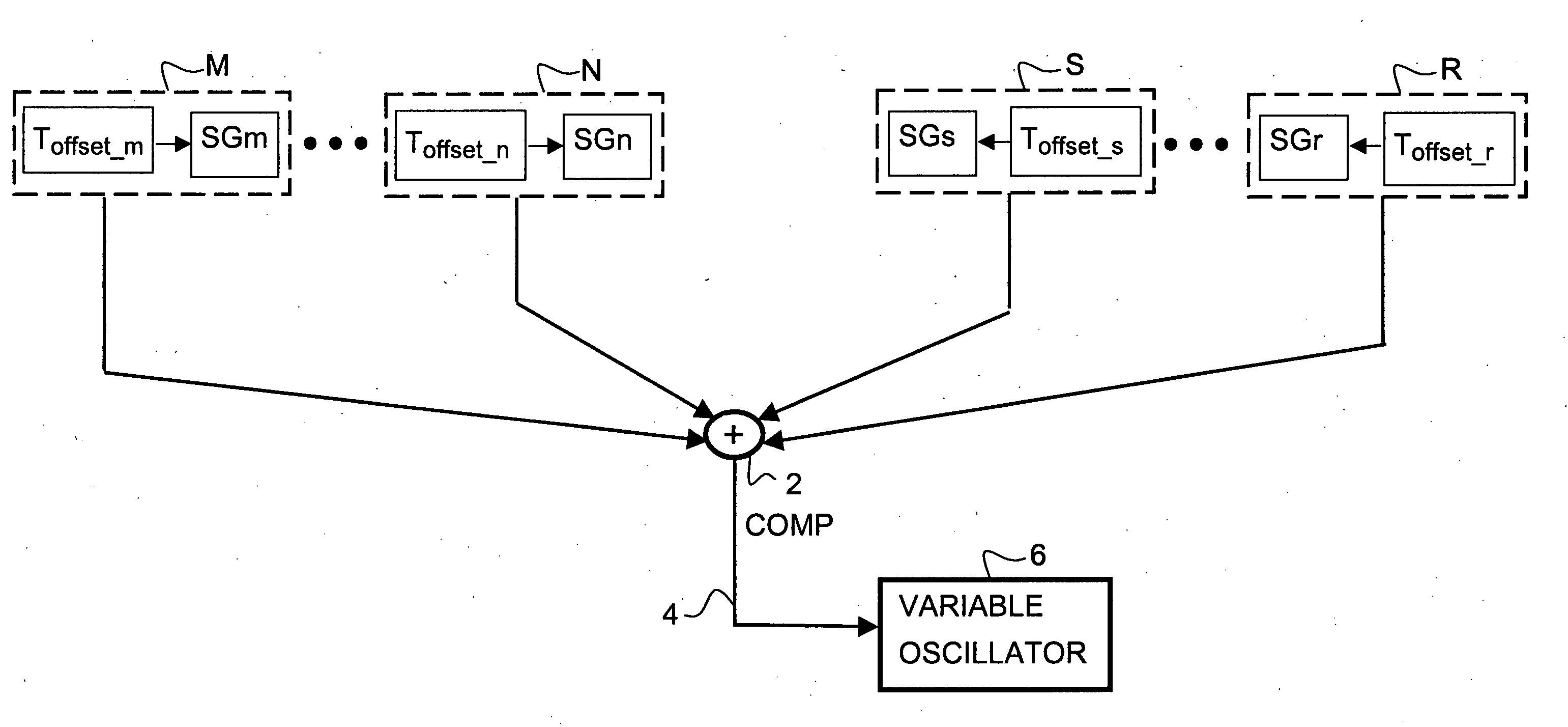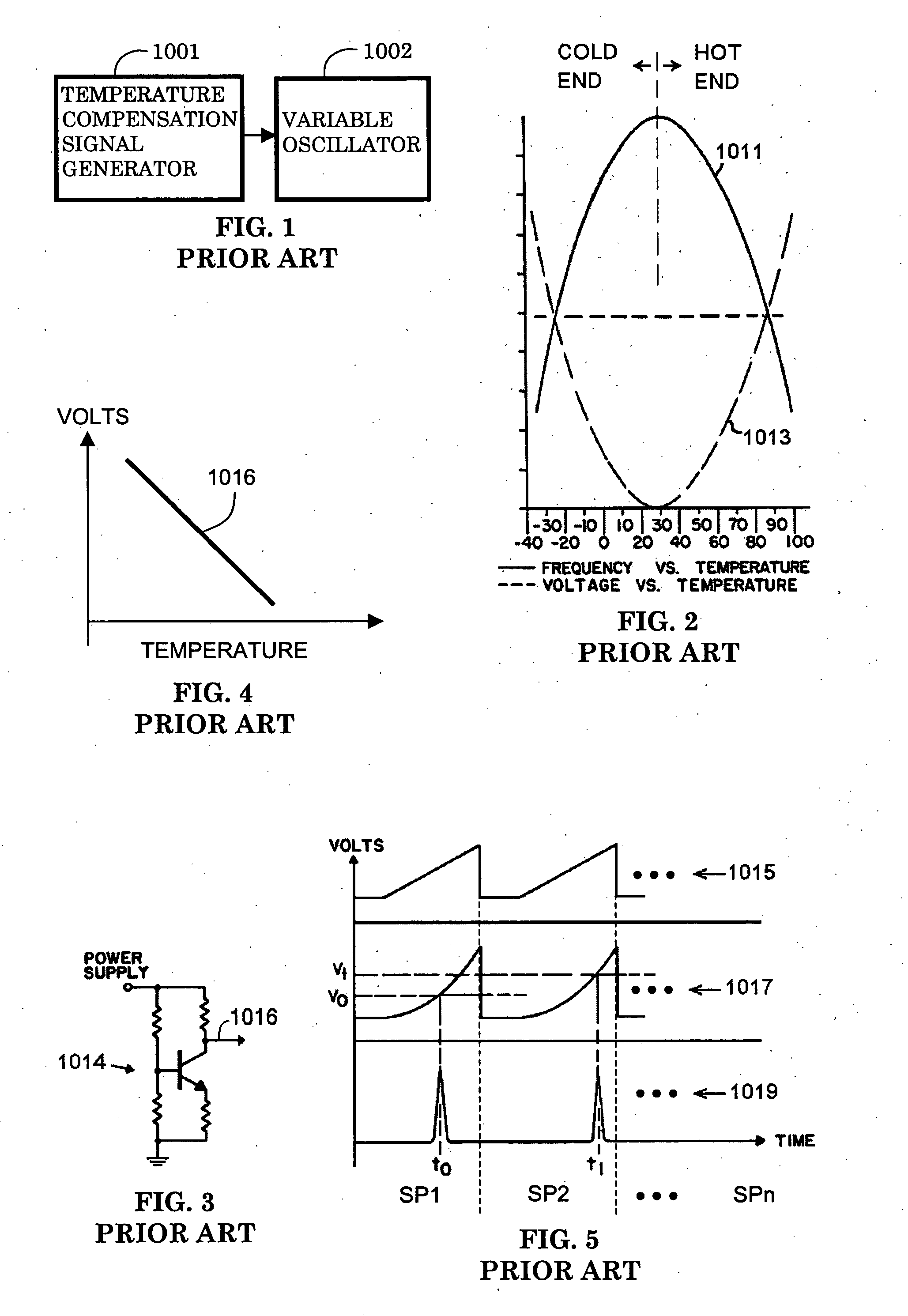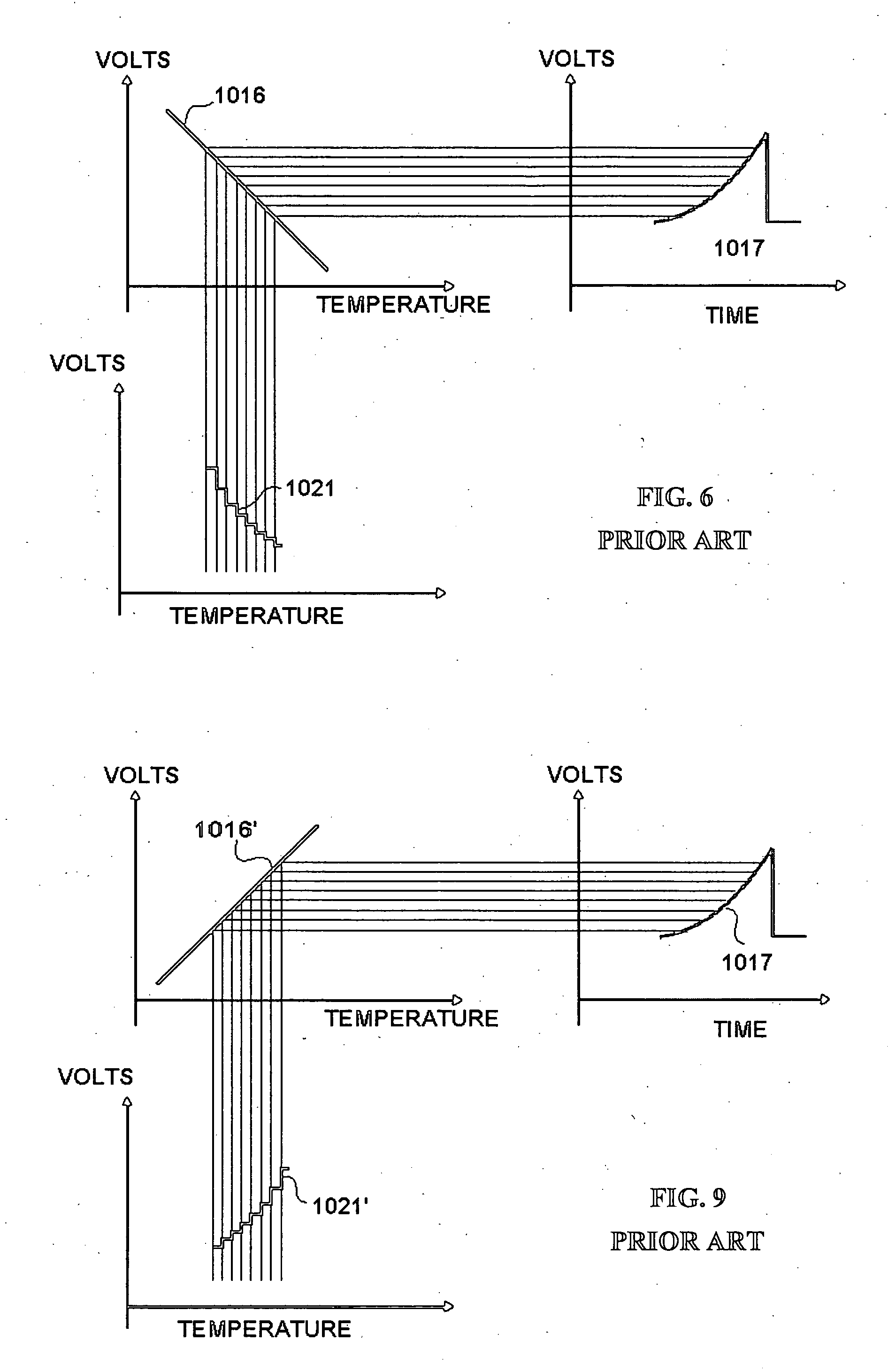Temperature compensation circuit
a temperature compensation circuit and circuit technology, applied in the direction of oscillator tubes, oscillator generators, electrical equipment, etc., can solve the problems of reducing the functional control pull range of oscillators, imposing more stringent requirements on their functional behavior, and difficult to construct temperature compensation signal generators
- Summary
- Abstract
- Description
- Claims
- Application Information
AI Technical Summary
Benefits of technology
Problems solved by technology
Method used
Image
Examples
Embodiment Construction
[0056] Preferred embodiments of the present invention are described below with reference to the accompanying figures.
[0057] Different oscillator types respond differently to changes in temperature. An understanding of how an oscillator's output frequency shifts under a varying temperature my be obtained by observing the oscillator's frequency-to-temperature characteristic curve, i.e. a plot of how the oscillator's output frequency naturally varies over a predefined temperature range. For illustrative purposes, the present invention is exemplarily applied to a surface acoustic wave (SAW) resonator based oscillator (i.e. an oscillator using a SAW type filter), but it is to be understood that the present invention may equally be applied to other types of oscillators with minor modification to presented procedure and circuitry.
[0058] With reference to FIG. 11, the qualitative shape of a frequency-to-temperature characteristic curve of a SAW resonator based oscillator without temperatu...
PUM
 Login to View More
Login to View More Abstract
Description
Claims
Application Information
 Login to View More
Login to View More - R&D
- Intellectual Property
- Life Sciences
- Materials
- Tech Scout
- Unparalleled Data Quality
- Higher Quality Content
- 60% Fewer Hallucinations
Browse by: Latest US Patents, China's latest patents, Technical Efficacy Thesaurus, Application Domain, Technology Topic, Popular Technical Reports.
© 2025 PatSnap. All rights reserved.Legal|Privacy policy|Modern Slavery Act Transparency Statement|Sitemap|About US| Contact US: help@patsnap.com



